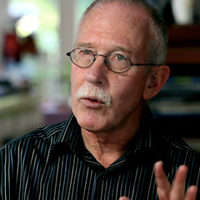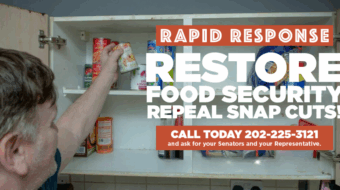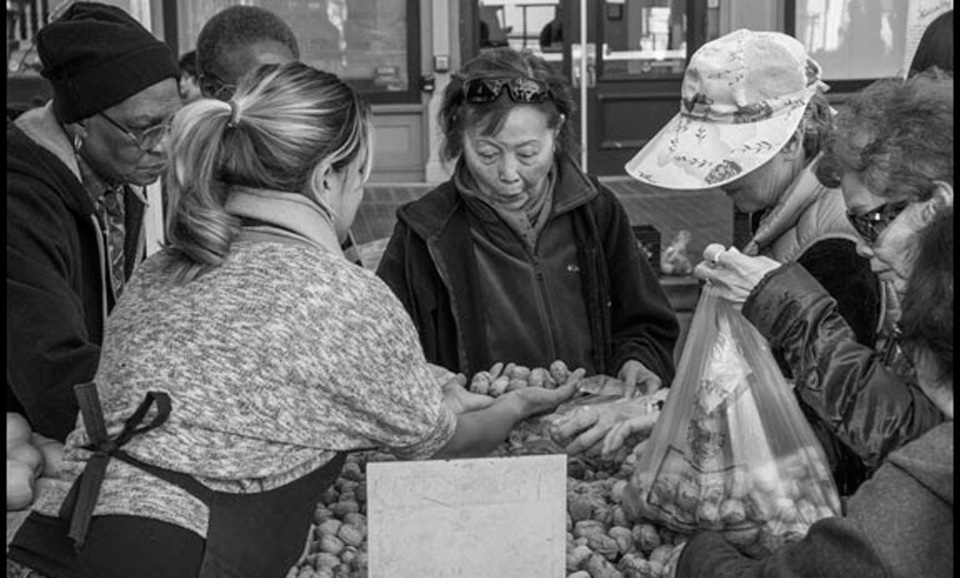
I do the cooking in my house. To me, it’s a way I show my love for the people in my life. I know I’m not the only person like that. When I read Amy Tan’s novel, The Joy Luck Club, the sections when the mothers tell their daughters about the importance of the best quality food resonated with me.
At the Friday farmers’ market in Oakland, California, I can see those mothers in front of the stalls, bargaining over the produce. Oakland is a working-class city across the bay from San Francisco, and like many California cities, it has an historic Chinese and Asian American community–a Chinatown. Being right next to Chinatown makes the Oakland farmers’ market unique.
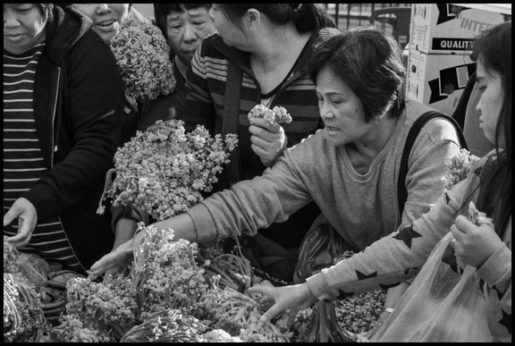
If you go up to the farmers’ markets in Berkeley (next door to Oakland) or over to San Francisco, these days you’ll find a booth or two with Asian vegetables. Asian cooking is healthy and popular. But because Berkeley and San Francisco are much more affluent communities, stalls at farmers’ markets often target more middle-class and even upper-middle-class shoppers.
At the Oakland market the Asian stalls are the majority. If you come early, you can see the moms of Chinatown around the stall that has the best baby bok choy or lemongrass. Six or seven women crowd together, examining carefully the cauliflower with the long spindly stalks that you’ll never see in a supermarket. Others check the persimmons, or the young ginger with the root still on the green stem, or the long Napa cabbage.
A lot of the food is grown by Hmong farmers near Fresno in California’s San Joaquin Valley. Women in other stalls are Filipinas from Stockton, or Mexican ladies from Kingsburg– the San Joaquin Valley meeting the Oakland ‘hood.
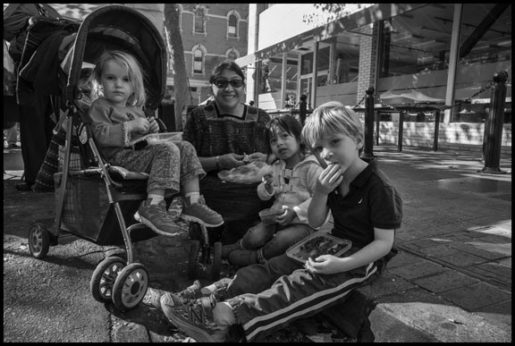
I appreciate picky shoppers, and the customers at the Friday market are some of the pickiest. They’re not just those Chinese moms. The market attracts immigrants from many countries. You can hear a dozen languages in the people filling its four blocks.
Some go first to the market, and then to the little stores on Eighth Street that specialize in the foods from back home–manioc flour for those from Ghana, dried codfish or imported jars of jerk seasoning for the Jamaicans. Taylor’s just inside the Swan’s Market building has boudin and cajun sausage for those who like to remember Louisiana, and longanisa for the ones who want garlic rice and longsilog for breakfast.
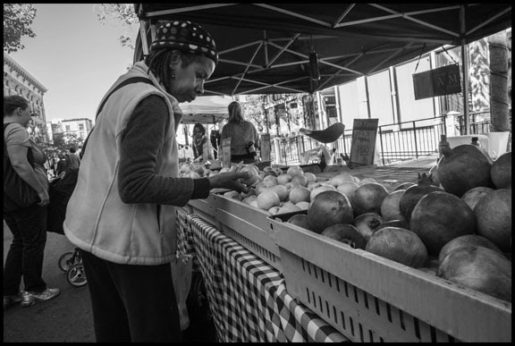
African Americans, Latinos, white folks–they’re all there. The large food vocabulary of the fruits and vegetables–the expression of love in what you cook–is one thing that brings people out. But another is the price. Competing with the markets in Chinatown just two blocks away, there’s a limit on what the stalls can charge, especially the ones with the Asian vegetables.
That definitely makes it a working-class farmers’ market. If you shop at the Berkeley farmers’ market the day afterward, the same tomato might cost you double.
But that’s not the first thing on my mind. It’s what am I making for dinner this week? What is it going to say?


